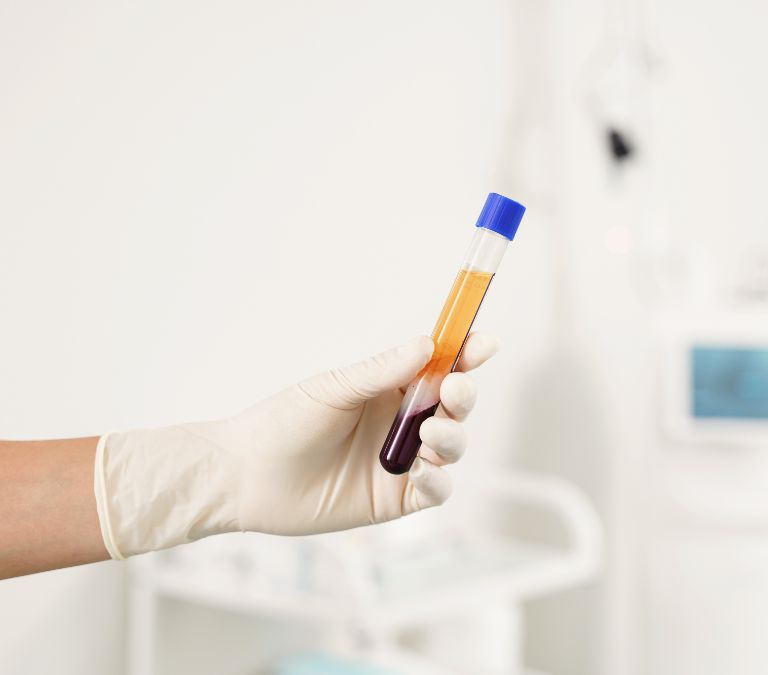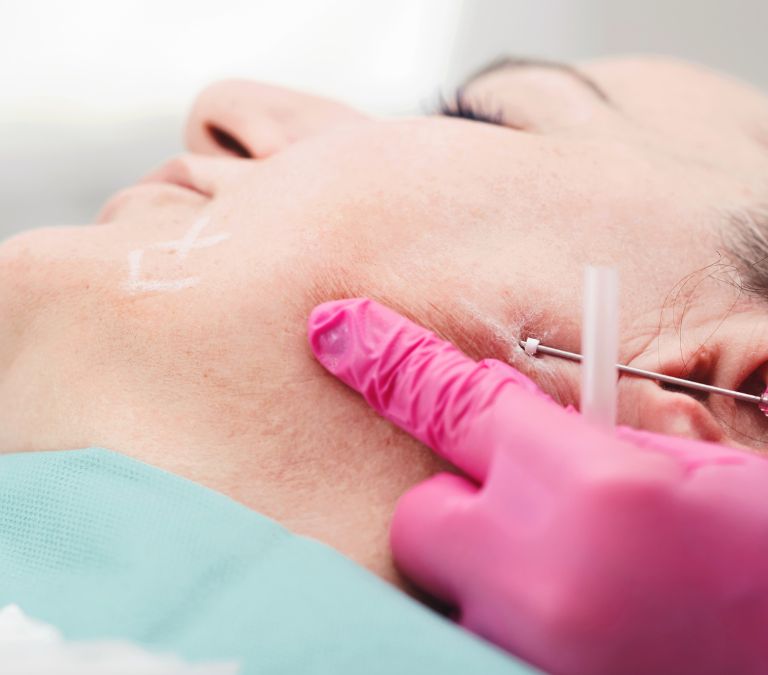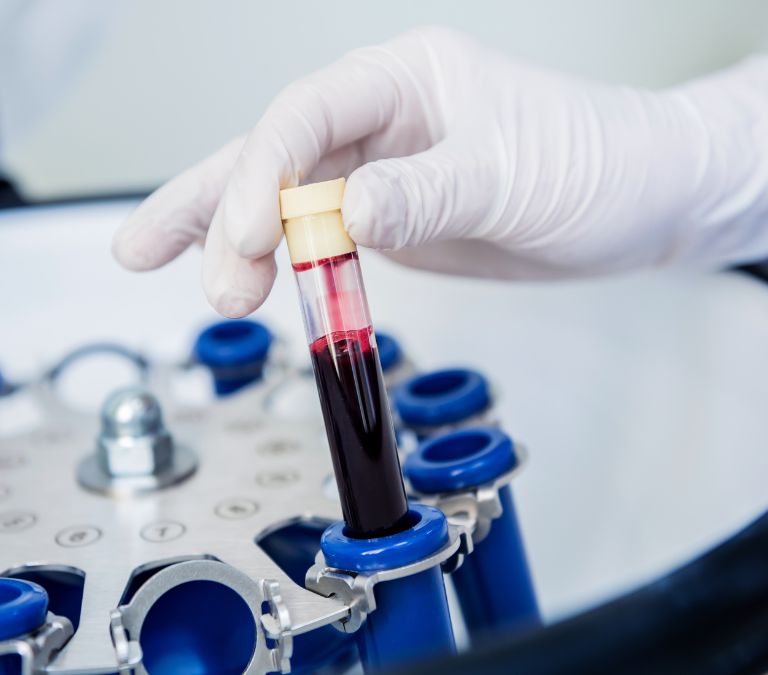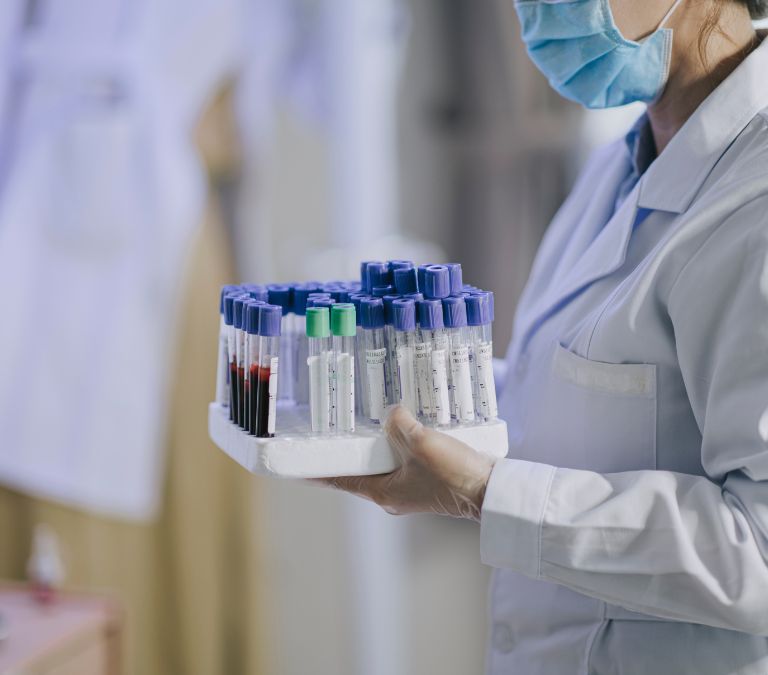Urinary incontinence is a term used to describe the unintentional passage of urine. This condition occurs in males and females but has a higher rate of occurrence in women. The reason for this is the difference in the reasons why this occurs.
For men, incontinence results from tampering with the prostrate. At the same time, for women, it is a result of problems in the bladder or the muscles of the pelvic floor. Because these problems arise from common situations like multiple childbirth and menopause, women often see this condition.
There are two types of urogenital incontinence: Urgency and stress incontinence. Urgency incontinence is a urinary leakage problem accompanied by a strong urge to urinate that is difficult to ignore. This particular type of incontinence is not common among menopausal women and is not the major interest of this article.
On the other hand, stress urinary incontinence or stress incontinence is a clinical condition in which activities like exercises, heavy lifting, laughing, sneezing, and coughing pressure your bladder, causing urine leakage. This particular type of incontinence is more common among menopausal women, and its treatment focuses on in this article.
The fact that urinary incontinence is most common in women above 50 ties the condition to menopause and the failing of the bladder and the pelvic floor muscles, which becomes even more pronounced during menopause due to the marked decrease in the estrogen level produced by the body.
Research into the treatment of stress incontinence among menopausal women has become necessary because of the level of distress this condition usually brings. In addition, most people with this condition suffer from decreased self-confidence and the need to isolate themselves. It will, in turn, inhibit their social and work lifestyle. Therefore, a woman who suffers from stress urinary incontinence will never feel normal unless the condition is treated.
For this reason, a lot of research is still ongoing, and once in a while, a new treatment or procedure to control this condition is brought to light. From exercise routines like Kegels to vaginal surgeries, treatment for this condition spans a wide area.
However, recently a new form of treatment for this condition has emerged. Although still under experimentation to confirm its potency, this procedure has been used to treat stress urogenital incontinence in many people, with marked improvement noticed after completion of the therapy. This method of treating this condition is called platelet-rich plasma therapy.
What does it entail? Platelet-rich plasma therapy is a non-invasive procedure that increases blood flow and promotes tissue regeneration in the clitoral, periureteral, and anterior vaginal regions. The goal is for women to experience less vaginal pain, reduce urinary incontinence, and get more sexual pleasure.
This process is novel, but it is a ray of sunshine for women who have suffered from this condition and seek ways to get their lives back to normal. This article details how this procedure works and the many ways to treat this condition.
How Does Platelet-rich Plasma (PRP) Therapy Work?

Let us get a bit scientific to understand how this condition can help those with stress urinary incontinence. What exactly is this procedure, and what is the basis behind it? In a quest to find ways to treat ailments without the risks of many side effects, medical practitioners realized that The human body is capable of self-healing. So they sought ways to harness these self-healing properties of the body, and platelet-rich plasma therapy is a result of one of these researches.
Platelet-rich plasma therapy is a regenerative medicine that can increase your body’s natural growth factors to mend tissue. It is based on the regenerative capabilities of platelets. Platelets, also called thrombocytes, are blood cells that aid in healing by forming blood clots.
Therefore, platelet activation is crucial in the body’s healing and recovery process. Plasma is the liquid extract of the entire blood after centrifugation. It is mostly made up of water and proteins. It is a transport medium for red blood cells, white blood cells, and platelets throughout the body.
Platelet-rich plasma (PRP) therapy accelerates the repair of injured tendons, ligaments, muscles, and joints by injecting plasma containing concentrated patient platelets. PRP injections work by utilizing each patient’s healing system to alleviate musculoskeletal issues.
This treatment comes in the form of injections. They are prepared by extracting one too many tubes of your blood and centrifuging it to form a concentration of platelets. These activated platelets are delivered into your body’s injured or sick tissue.
In addition, growth factors are released; as a result, stimulating and increasing the number of reparative cells that your body is capable of producing. This injection is usually done with visual guidance provided by ultrasound imaging.
Platelet-rich plasma (PRP) therapy is a novel and promising regenerative medicine treatment that marks a significant step forward in medicine. Despite limited published research, platelet-rich plasma (PRP) therapy is currently employed in various medical fields. Some of the fields where this form of therapy has been used with success include:
- In sports, for the medical therapy of many injuries sustained during play.
- For the treatment of alopecia, a disease of the immune system that causes hair loss, this therapy aids in anchoring grafts and stimulating hair follicles.
- It erases stretch marks by stimulating fibroblasts to produce more follicles. It is also used in the beauty industry to treat and rejuvenate the face and other body parts.
So why is this procedure being touted as a therapy option for stress incontinence? First, a growth factor is found in platelet-rich plasma known as vascular endothelial growth factor (VEGF). When platelet-rich plasma is injected into the periureteral region and the anterior vaginal wall, it stimulates the regeneration of nerves, blood vessels, and tissues in the areas associated with sexual stimulation and urine incontinence, all of which appear to become healthier and more functional. In addition, PRP injections cause localized coagulation, which has been found to strengthen the urethra.
This process usually involves using a local anesthetic unless the patient demands otherwise. First, blood is collected from the patient and centrifuged to extract the platelet-rich plasma, which is then transferred into syringes and injected into the urogenital regions.
This process follows a long-established due process and presents minimal risk. There are little or no discomforts caused, especially when a local anesthetic is used.
Risks and Possible Long-term Effects of PRP Therapy For Stress Incontinence

We have already mentioned that this therapy does not have minimal side effects. There is no risk of adverse drug interactions, nor does it negatively affect the cardiovascular system. There are no contraindications, and you can continue your normal life even after getting this treatment.
There have been complaints of skin reactions, especially at the injection site, and there have been signs of infection. Some of the signs to look out for include:
- Inflammation
- Redness
- Swelling
- Discomfort
- Edema
- Increased bruising
While extreme caution is usually taken while injecting a patient with PRP serum–intense sterilizing measures are, in fact, strictly followed for each treatment–infections can still occur in the wounded area. PRP injections have few side effects because they are made from your blood, so your body will not reject or react badly to them, which is the major reason many medications hurt the recipient’s body. However, there have been reported cases of people who reacted negatively to their plasma. Studies are underway to understand why this happens.
The bruising caused by this treatment is considered normal depending on the intensity and the patient’s bruising history. The more intense bruises, especially those who do not bruise easily, might require medical attention.
There is also the possibility that people treated with this form of therapy might not see any improvement. It is still unclear, and studies are ongoing to determine why these people do not respond to treatment.
Who Needs PRP Therapy
Platelet-rich plasma therapy has been gaining popularity in the past few years. It has shown promise in many areas, especially in sports injuries and alopecia treatment. So who are the people who need this treatment, and what conditions would prompt someone to need this form of therapy?
- People With Musculoskeletal Injuries
This treatment procedure has been successfully used in various musculoskeletal conditions. However, some people have occupational musculoskeletal risks. These people often present with conditions like tennis elbows and jumper’s knees. These conditions take a long while to heal and might begin to pose a problem for people suffering from them. A physician can prescribe PRP shots to add to the treatment regimen to help these people. It will hasten the healing process and help reduce the pain from these conditions.
- People Suffering From Hair Loss
There are a lot of health conditions that present with hair loss. A very common condition that leads to this is alopecia, an autoimmune disease that leads to hair loss in men. It can become embarrassing if not controlled. Hair loss might sound like a minimal issue, but it can cause a lot of distress to those who present with them. PRP injections can help prevent hair loss and promote new hair growth in men with male pattern baldness. PRP can also help with hair growth stimulation following hair transplants.
- People Who Have Gone Through Surgery
It was probably the first recorded use of this form of therapy. Doctors first utilized Platelet-rich plasma therapy to speed up the healing process following jaw or plastic surgery. PRP injections after surgery are now used to assist mend muscles, tendons, and ligaments, with extremely long recovery rates.
It means people who need surgery do not spend as much time and money as they normally would on post-surgical treatment. Therefore, platelet-rich plasma therapy plays an important role in managing post-surgical patients.
- People Presenting With Osteoarthritis
It will probably remain a controversial opinion. The FDA has not approved the use of platelet-rich plasma to treat this condition. Although evidence points towards this, it has not been confirmed that platelet-rich plasma injections are effective for treating osteoarthritis, as some research has shown conflicting results.
There is, however, enough research to show that platelet-rich plasma can be used to reduce pain levels and improve the physical function of people suffering from this condition without presenting with serious adverse effects. There is still ongoing research in this field as hopes are high for FDA approval.
- Women With Stress Urinary Incontinence
Because platelet-rich plasma (PRP) increases the formation of new blood vessels and the proliferation of fibroblasts and therefore improves wound healing in both soft and hard tissue, it has come to the mind of various medical practitioners that this treatment method might prove useful for the treatment of mild stress urinary incontinence, a condition that is brought about by the weakening of the bladder and muscles of the pelvic floor.
Platelet-rich plasma (PRP) is a concentrated platelet that governs tissue restoration and has previously been employed in orthopedic and plastic surgical procedures. PRP treatment for pelvic floor dysfunction, including stress urine incontinence, showed promise in a recent trial. Even though there has been no FDA approval for this form of treatment of stress, it is still possible to get this treatment and feel better while at it.
Is Platelet-rich Plasma Therapy For Stress Urinary Incontinence For Everyone
Stress urinary incontinence is a condition that bothers both men and women. Therefore, it is a good enough reason to ask if the option of using platelet-rich plasma for this condition is open to everyone. Unfortunately, the answer is no, and here is why.
First, this form of treatment is not open to men. It is due to the etiology behind this condition in men. In men, surgery to remove the prostate gland to treat prostate cancer (prostatectomy) is the most common factor behind stress incontinence. Another cause of stress urinary incontinence in men is tampering with the prostrate. Because of this, treatment with platelet-rich plasma is out of the question for men.
So it is used to treat this condition in women. But, is it open to all women? Again, the answer is no. Stress urinary incontinence ranges from very mild to very severe. The severity of this condition plays a good role in whether this form of therapy would work for you.
People with mild stress urinary incontinence might be advised to go for simpler, cheaper options, while those with severe cases might have to go for more drastic options, like surgery. This therapy is best for women with stress urinary incontinence that ranges from mild to barely severe.
Many women have benefited from platelet-rich plasma therapy, which has assisted them with several issues ranging from sexual dysfunction to urinary incontinence. You’ll need to speak with a professional to determine if PRP therapy is right for you. Every patient is unique, and what works for one patient might not work for another.
However, with treatments for hair regrowth, musculoskeletal pain relief, skin aging reversal, and sexual health rejuvenation, plasma-rich platelet therapy can make a significant difference in your life. The best thing is that plasma-rich platelet therapy is completely natural and autologous, which means it is derived from the patient, lowering the chance of rejection or allergic reaction.
So if you are a woman who falls under this umbrella and urinary incontinence has become distressing, this form of treatment might be what you are looking for. It’s also a potential therapy option for women with stress incontinence who haven’t had success with perineal rehabilitation or don’t want to undergo surgery.
How Soon Can You Return To Work After Treatment With PRP Injection

Injections of platelet-rich plasma into any area will necessitate some recovery time. Platelet-rich plasma, as previously stated, does not solve the problem or alleviate symptoms; rather, it initiates and accelerates a natural healing process. The healing process will take several weeks or months. Still, the treatment region will be uncomfortable and swollen for the first few days. Swelling is, in fact, a normal aspect of the healing process.
The platelet-rich plasma injection recovery period is usually one to two days. Patients who receive platelet-rich plasma treatments may be able to return to work the next day. Others will need to relax for one or two days. Avoid strenuous exercise and limit activities that require the use of the afflicted area. Before resuming sexual activity, it is recommended that you wait for at least 24 to 48 hours.
It is also suggested that the patient be physically active every day following the injection to increase blood flow; for example, go for a vigorous walk of 3 to 5 kilometers per day. Anti-inflammatory drugs, such as steroids or NSAIDs, should be avoided for at least a week even though the treated area may enlarge. Your doctor may prescribe pain medicines that aren’t anti-inflammatory.
This treatment is non-invasive and comes with minimal pain, so the recovery time is generally low. When needed, and if the patient can bear a little discomfort, they can return to work on the same day.
When Should I Expect Changes After PRP Injection Is Administered?
It is important to note that platelet-rich plasma injections are not as effective as medicines or surgery at alleviating symptoms or resolving problems. Instead, they begin a natural regenerating process that can take weeks to months, depending on the nature and extent of treatment.
The majority of women see good effects gradually over the first few weeks. These advantages can last anywhere from a few months to several years, after which a physician repeats the procedure. The treatment lasts for 12 to 18 months in general.
PRP injections are given to the patient as often as necessary.
What Is The Average Cost Of Platelet-Rich Plasma Injection
Platelet-rich plasma treatment is not covered by insurance unless it is part of a surgical procedure. In this instance, the patient is responsible for the entire cost of the PRP injection.
There is no agreement on the price of platelet-rich plasma treatment. The cost of treatment varies depending on the location, infrastructure, and the doctor’s competence in performing it. Treatments may need to be repeated in some cases. A single treatment costs about $750 on average, although it can cost anywhere from $300 to $2,500. An initial consultation may incur additional costs. It is also possible that it will not be covered by health insurance. As a result, most PRP procedures can cost anywhere from $300 to $2,700.
Does Insurance cover these Injections?
In most situations, this is not the case. Insurance companies currently consider platelet-rich plasma treatments to be experimental or investigational. It indicates that not enough testing has been done. According to medical insurance experts, platelet-rich plasma is still in the experimental stages of proving its efficacy. As a result, most insurance companies refuse to cover it. Platelet-rich plasma is considered a fee-for-service treatment by clinics that offer it.
As things stand, anyone who chooses platelet-rich plasma treatment will be responsible for the entire cost. The therapy will most likely remain a fee-for-service operation until the additional study is done and PRP gains the scientific underpinning required for full insurance reimbursement.
However, medical practitioners who believe in PRP and have direct experience with its usefulness are pushing hard to have it reimbursed by insurance companies. It is a difficult but not impossible task.
Why Is Treatment Of Stress Urinary Incontinence With Platelet-rich Plasma Not FDA Approved?
Treatment of stress urinary Incontinence with platelet-rich plasma is another complicated situation. PRP is essentially a “biologic” under FDA criteria and devices are needed to prepare PRP. The government agency is engaged in clearing and authorizing PRP treatments and devices.
The FDA has approved the vast majority of equipment used to manufacture PRP. Because PRP treatments use a person’s blood and are not deemed “drugs,” they do not require FDA approval before being used by practitioners. It’s crucial to remember that many processes and treatments utilized in clinical settings are not FDA-approved but are authorized because they are designated “certified” for usage. This is the case with PRP procedures and the machines used to extract PRP samples and centrifuges.
The FDA has approved PRP treatment regimens for diabetic ulcers that refuse to heal and select orthopedic surgery cases. However, approval is still under consideration for using platelet-rich plasma to treat stress urinary incontinence.
Platelet-rich plasma is used to treat stress urinary incontinence in women who have shown promise. It provides a non-invasive, painless, and stress-free method for treating what would normally be a very distressing condition. While it might not be the best for everyone, you should seek out your healthcare provider and see whether this treatment is an option that is open to you.







